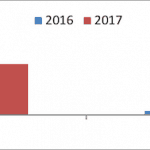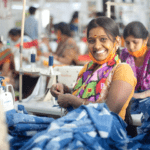In the Race for Dominance in African Fintech, Partnerships With Phone Makers Are Transforming the Landscape
In emerging markets, the past two to three years have been strewn with corporate partnerships and acquisitions, as major companies aim to position themselves as quickly as possible to dominate in the digital payments and cross-border payments space. Numerous large corporate players have proudly announced large-scale alliances in Africa, crucially aware that they need to combine their forces and market bulk to stay ahead of disruptive fintechs and neobanks. Among the usual partnerships between telecoms, banks, payment companies and software companies is another emerging genre of corporate alliance that has received little coverage: Mobile phone and hardware makers are now pairing with payment providers and telecom operators. This adds a new model to the market: Partnerships between these companies will enable the convenient delivery of a distinct credit product — asset financing — at a low upfront cost to the consumers and small enterprises that so many companies are desperate to serve at scale.
This model brings convenient financing opportunities to consumers and merchants across Africa, enabling them to acquire mobile phones — either first-ever devices or upgraded devices like smartphones. Other digital finance providers can offer credit; what sets this model apart is the precision of the simple product — asset loans for a mobile phone — and the level of control and distribution it provides. This gives telecom operators and payment providers a channel to “own” the customer relationship directly through the phone they provide. Customers also benefit, gaining the built-in ability to pay for the device over time, which is key for people with irregular incomes — a common situation among African populations. These partnerships retain the benefits found in other models of digital credit, such as the ability to build customers’ financial history by monitoring their payments, which could be leveraged to increase access to finance.
Why financing mobile phones matters to unbanked Africans — and service providers
Bringing hardware makers into the picture addresses two of the key challenges customers face in accessing finance: a lack of providers with affordable products and tight finance markets overall, which leads to less money to lend out and higher interest rates when it is lent.
The model offers finance providers another critical benefit related to growth: They scale by gaining new customers, and the gateway channel for new customers is mobile phones, which provide the hardware to host their services while generating business data on customer behaviors. Disseminating affordable mobile phones with financial service apps pre-loaded gives customers a default payment service to use, while differentiating these providers from their competitors and allowing them to monitor all kinds of customer activities. Partnerships between phone makers, financial service providers and telecom operators thus create a triangulated and richer picture of consumer behavior, while boosting digital financial service uptake.
For all these reasons, these phone/finance partnerships are more exciting than partnerships like the one Airtel and Mastercard announced a year ago, which sounded very much like many other large pan-African corporate partnerships. It featured goals like “extending credit” and “increasing financing opportunities” for underserved and informal consumers, and big visions of its ability to scale to many African markets — all very broad and common statements among these kinds of high-level initiatives. When a mobile phone maker is involved, these frequently cited aspirations mean something much more tangible and direct, as the phones themselves offer a more immediate channel for the distribution of financing for a specific product. This type of asset financing product will get more phones (both feature phones and smartphones) to those who don’t already have them, growing the overall market and expanding the digital finance ecosystem as well.
Mastercard’s new partnership with Samsung Electronics, Airtel Africa and Asante Financial Services Group, announced last September, adopts this approach. They are launching a service platform that aims to bring convenient financing opportunities to consumers, entrepreneurs and merchants across Africa, enabling them to acquire Samsung mobile devices. This adds some important elements to the goal of scaling finance:
- For one, financial service providers cannot generate business if people don’t have phones — and they can capitalize in a multitude of ways if people have smartphones. Once a customer has a smartphone, the amount of data they generate increases exponentially, as does their digital footprint. An asset financing product that gets more smartphones to those who don’t already have them will help stimulate the overall digital ecosystem.
- Additionally, mobile phones provide a form of collateral, which overcomes a major challenge of unsecured digital financing models, including those that have gained extensive media recognition and large venture capital investments. This frequently replicated model involves extending loans unbacked by collateral by assessing borrowers’ digital behaviors using artificial intelligence and machine learning. Ultimately, these unsecured loans provide little recourse for lenders in the event of non-performance, requiring high interest rates to compensate for customers who don’t repay. In contrast, offering a mobile phone as the gateway to financing provides lenders with the ability to securitize the loan (via measures such as shutting off phone access in response to non-payment), lowering non-performance and reducing interest rates for consumers.
This model of asset financing via digital payments is not new. It is used by the well-known PAYGO solar business models, which are continuing to scale around the world while collecting millions of dollars in investments. Yet solar manufacturing is much more fragmented than mobile phone manufacturing, the scale is incomparably smaller, and the amount of customer data that can be harvested from off-grid solar systems is exponentially lower. With the phone, putting the asset in the hand of the customer is often worth more to the financial service provider (and other third parties with data-driven business models) than it is to the customer herself.
Mobile phone makers joining corporate partnerships
The Mastercard/Samsung partnership mentioned above wasn’t the only such alliance announced last September. Later that month, the mobile phone maker Huawei made an announcement about a strategic partnership with Mondia and its digital payment entity Mondia Pay. Although it’s not a household name, Mondia is not a small startup: It operates in over 10 countries and serves the largest businesses in Africa — namely, mobile network operators.
MondiaPay enables payment collections through mobile money or direct carrier billing, which allows users to pay for goods and services by charging them to their phone bill or mobile airtime. This partnership beautifully leverages the sticky relationship and brand recognition that consumers already have with mobile network operators. It requires no special e-money issuer license, which can differ country by country, and requires no bank cards or additional registration from consumers; they use it in the same way they have been buying and consuming airtime on their phone. This can broaden the partners’ base of consumers greatly, especially in Africa where airtime payments are still a huge proportion of mobile transactions.
Samsung and Huawei are not the only mobile phone makers building such strategic partnerships with digital finance providers in African markets. Chinese phone maker Transsion has made one of the most robust forays into digital payments in Africa, with a US $40 million investment in the payments service PalmPay. This is more than a conventional venture capital investment: PalmPay’s service will come pre-installed on Transsion’s mobile phone brands, giving them an enormous market advantage as they work to expand from Africa’s largest market, Nigeria, to Ghana and then elsewhere across the continent.
The three mobile phone makers involved in these partnerships dominate the African market for both feature phones (still the most commonly used phone on the continent) and also smartphones. Taken together, in Q2 2020 Transsion, Samsung and Huawei held over 70% of the smartphone market in Africa, led by Transsion brands at 45.2%. Transsion is also a leader in Africa’s feature phone market, with popular brands such as Tecno, itel and Infinix — along with lower-cost smartphones that are known for designs specifically oriented to African markets.
Ultimately, the race is for the data
What does the emerging trend toward mobile phone/digital finance partnerships mean for consumers — and for credit clients? By now you may have noticed that Chinese mobile phone makers are dominating this trend; two out of the three phone makers mentioned above are Chinese, and Transsion and Huawei together hold a 54% unit share of the smartphone market.
China brings a unique and possibly unbeatable advantage in hardware: No other country has the kind of manufacturing dominance in mobile phones that China does in Africa’s markets. And though local competitors like the relatively new Mara Phones are emerging, they are barely getting started with production — Mara’s first factory just opened in 2019.
Up until recently, China’s main tech rival, the U.S., has been taking for granted its leadership role in emerging markets in terms of tech, entrepreneurship, software and platforms. Though Facebook and WhatsApp are still far more popular than WeChat in developing countries outside of China, Chinese services are finding their way onto consumers’ phones in these countries. For instance, TikTok is gaining ground and has demonstrated it can stand up to some geopolitical hardball. The Opera web browser is owned by a consortium of Chinese investors, and it now claims almost 10% of Africa’s browser market. That’s not much compared to Chrome’s 70+%, but when considering the growth potential of apps pre-installed on mobile phones, and the expansive addressable market in Africa, the future could definitely look different. In Nigeria, Opera and MTN are offering data bundles that provide more browsing at lower costs — the type of value proposition that could easily resonate in a market like Africa, especially given the constantly shifting nature of the technology sector. For a cautionary tale, one need look no further than the largely forgotten Netscape, which, thanks to being initially bundled with Microsoft’s operating system, at one point had 90% of the browser market.
Behind the Screen, Soft Diplomacy Through Technology
What we’re seeing now is a larger trend of Chinese soft diplomacy in Africa via specific and strategic forays in technology, particularly focused on the digital payments space. By combining digital financial services and its dominance in mobile phone manufacturing, China can gain vast amounts of data and insights on African transactions — and thus, on consumer behaviors. This can allow it to influence the continent’s development through technology, formerly seen as a space dominated by the U.S.
The United States has been creating programs and activities to try to build its capacity and influence in Africa at the governing level, scrambling to counter China’s geopolitical influence on the continent. For instance, The U.S. government’s new Digital Connectivity and Cybersecurity Partnership offers technical assistance to developing country governments in information and communications technology (ICT) policy and regulatory frameworks. And under USAID’s ProICT program, fintech, e-commerce and cross-border data flows are key areas where it aims to “provide expert firms or consultants to directly assist developing country governments” as they implement ICT-related public policy in their own national settings.
These are clear attempts to counter Chinese influence in the digital governance arena — acknowledging that such influence is a threat. But it is easy to see that these fledgling bi-lateral policy efforts will take far longer to make an impact and shape an industry than the type of private sector partnerships discussed above. And this does not even take into account the large role Chinese companies play in building the connectivity infrastructure in African markets.
When we look under the hood — or in this case, behind the screen — China’s soft diplomacy is being done via tech platforms and tech hardware, not via governments or behind closed doors at ministerial meetings. These corporate alliances among digital finance and tech actors in Africa — payment providers, mobile phone makers and mobile network operators — have far greater implications than delivering finance via a phone. They are a key example of China’s forays into technology in emerging markets — not just for profit, but for influence and strategic diplomacy. They should not be overlooked by other global businesses or governments.
Jill Lagos Shemin is a consultant and advisor in digital economy and business model development in emerging and frontier markets.
Photo courtesy of Matheus Bertelli.
- Categories
- Finance, Technology, Telecommunications



